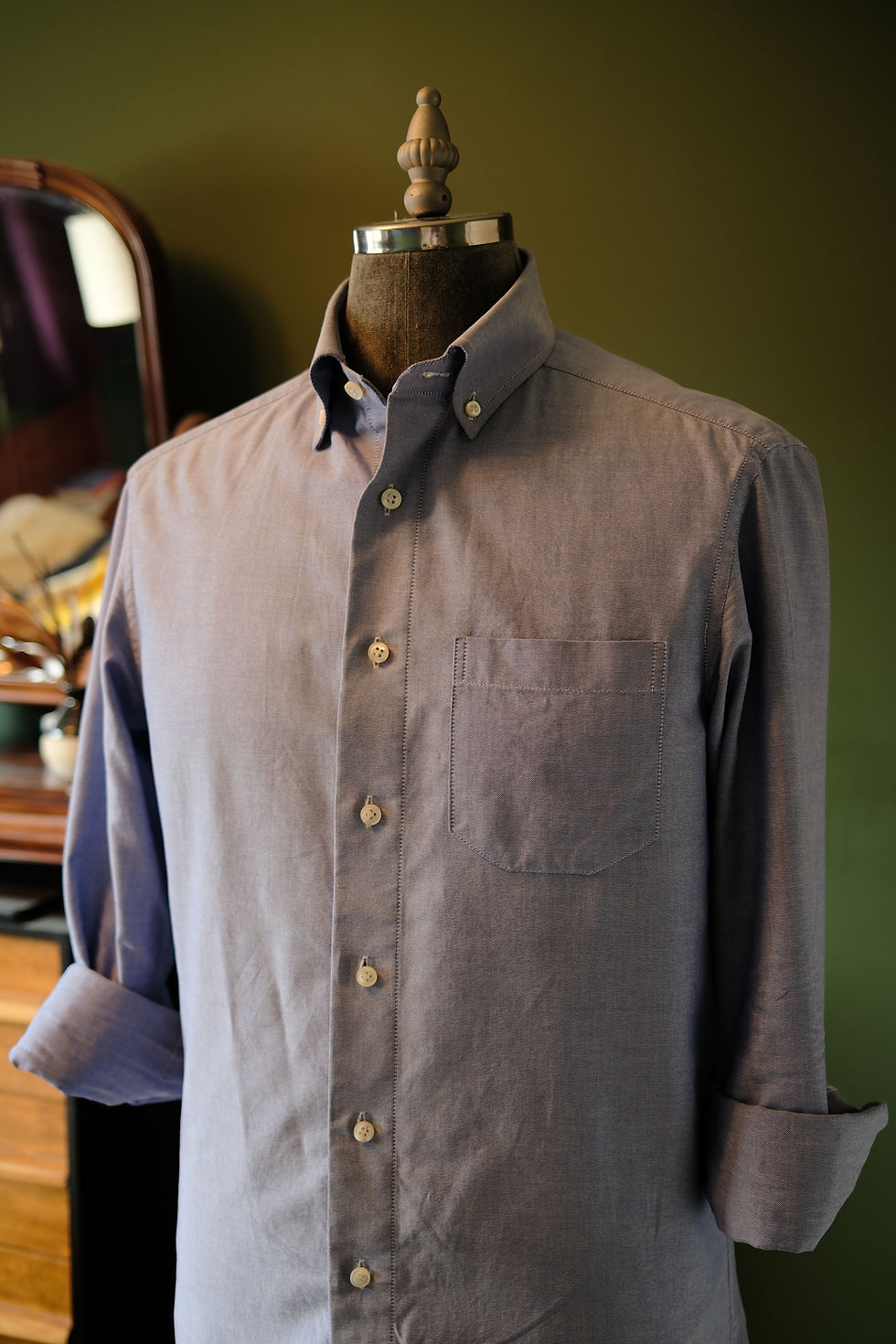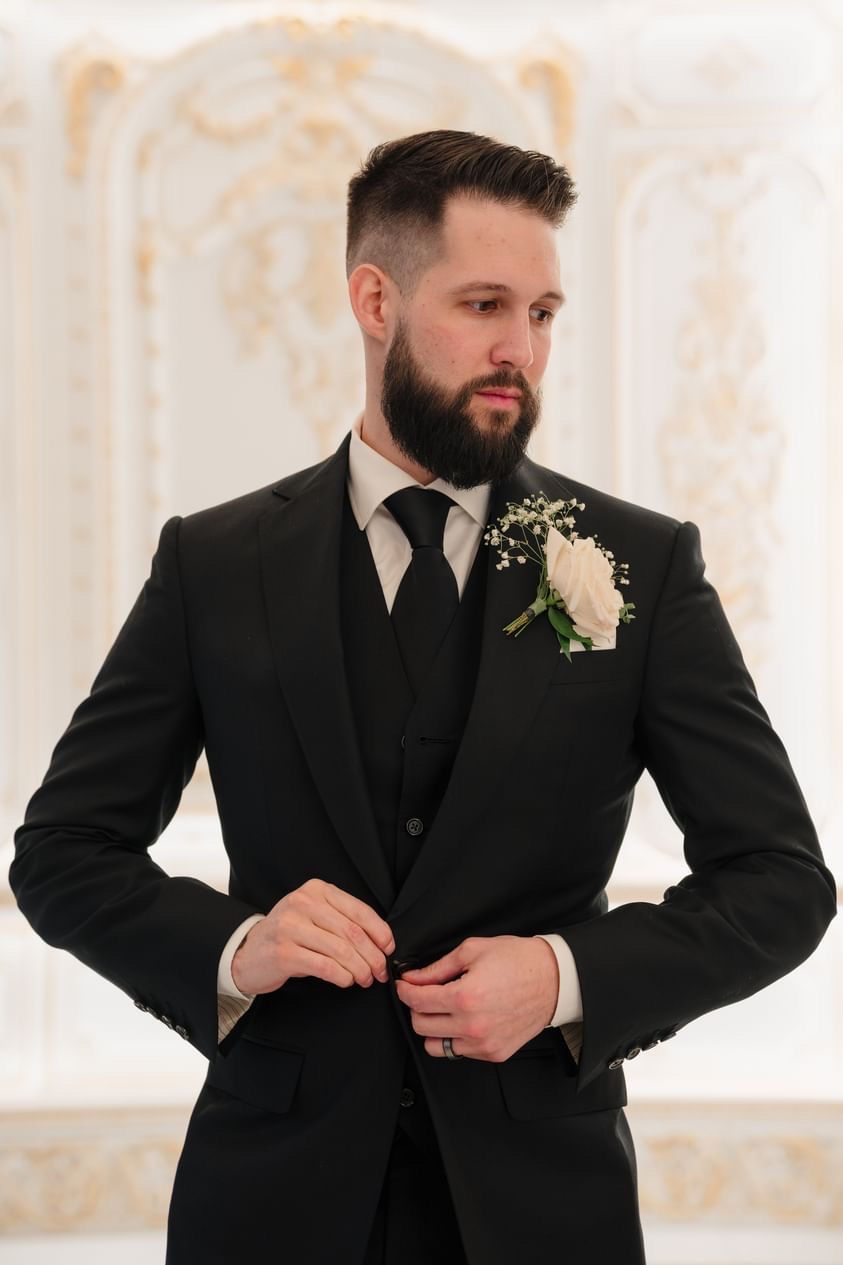Five Fundamentals of Bespoke: How to Tell If A Suit Is Bespoke
- Allan Sinclair
- Dec 5, 2024
- 4 min read
Updated: Jun 15
In an age where terms like "bespoke" and "custom" are used interchangeably—and often incorrectly—understanding what truly sets a bespoke suit apart has become essential. Bespoke tailoring represents the pinnacle of craftsmanship, tradition, and individuality. But how can you be sure your suit is genuinely bespoke or that your tailor is the real deal? Here are the five fundamentals of bespoke tailoring to help you distinguish true bespoke from imitators.
Top 5 Signs: How to Tell if a Suit is Bespoke
A unique individual pattern created just for you
Two or more in-person fittings during construction
Hours of hand-cut and hand-sewn craftsmanship
Use of traditional floating canvas construction
A premium cost that reflects time, skill, and fabric quality
1. Individual Personal Pattern
A genuine bespoke suit starts with a blank slate—your personal pattern. Unlike ready-to-wear or made-to-measure garments, which rely on standardized templates, bespoke tailoring involves drafting a unique pattern from scratch. This pattern is designed specifically for your body, taking into account every nuance of your posture, proportions, and fit preferences.
How to Spot the Difference: Ask your tailor if they draft individual patterns for each client. Genuine bespoke tailors will retain your pattern for future adjustments or additional garments. If your "bespoke" suit is made from an existing template with minor adjustments, it's likely not bespoke.
Here in Calgary, many clients come to us after realizing their so-called "custom suit" wasn't truly bespoke. Creating a personal pattern from scratch is the first—and most crucial—step to achieving superior fit.

2. Multiple In-Person Fittings
Fit is the cornerstone of bespoke tailoring, and achieving it requires a meticulous process. Every bespoke client should receive at least two fittings: a skeleton baste fitting and a forward fitting. These fittings occur at various stages of construction to refine the garment's balance, drape, and overall fit.
What to Expect:
Skeleton Baste Fitting: The garment is loosely assembled with large stitches, allowing significant adjustments.
Forward Fitting: The refined suit is closer to completion, with minor tweaks ensuring perfection.
If your tailor delivers a finished suit after a single measurement session, you're likely dealing with a made-to-measure or custom service, not bespoke.

3. Crafted by Skilled Artisans
A hallmark of bespoke tailoring is the craftsmanship of skilled artisans. Genuine bespoke suits are hand-cut, hand-stitched, and hand-finished by experienced tailors. These professionals dedicate hours—often 80 or more—to creating a single suit.
How to Verify:
Meet the tailor or observe their workroom. An actual bespoke tailor will be proud to show their workspace and discuss the process.
Look for hand-finishing details, such as hand-finished linings, hand-finished collars, handmade buttonholes, pick stitching, and floating canvas construction. However, increasingly, hand-finishing information is becoming more common in made-to-measure garments, and it is not as reliable a signal as it once was. This is why it is essential to meet the cutter or tailor or at least be able to see some behind-the-scenes processes.
At Allan David Bespoke in Calgary, we are Alberta's only genuine bespoke tailor, welcoming clients into the workshop for fittings to provide them with a firsthand look at the craftsmanship that goes into each garment.
4. Made Using Traditional Techniques
Bespoke tailoring is deeply rooted in tradition. Techniques such as hand-sewn buttonholes, floating interlinings, and full-canvas construction have been refined over centuries and remain unmatched in quality.
What to Ask:
Does the suit feature a floating canvas, or is it fused? Floating canvases offer superior structure and flexibility, whereas fused suits—common in ready-to-wear—utilize glued linings that compromise longevity.
Are the chest canvas, collar and lapels padded and shaped by hand?
Are buttonholes hand-stitched? Machine-made buttonholes lack the sophistication and elegance of their hand-sewn counterparts.
Traditional techniques are time-intensive, resulting in a garment of unparalleled quality and longevity.
5. Premium Cost
Quality comes at a price. A genuine, bespoke suit is an investment, reflecting the skill, time, and materials that go into its creation. If a suit is marketed as "bespoke" but comes with a bargain price tag, it's worth questioning the authenticity of the service.
What to Consider:
Labour Costs: True bespoke requires hundreds of hours of skilled labour, reflected in the price.
Materials: Bespoke suits often utilize premium fabrics from prestigious mills, which adds to the cost.
While bespoke tailoring is an investment, it delivers unmatched value in terms of fit, comfort, and durability. A tailored suit is more than a garment; it's a lifelong companion.
Why It Matters
Understanding these five fundamentals ensures you get what you pay for and supports the integrity of the tailoring craft. Bespoke tailoring is more than a label—it's a commitment to tradition, quality, and personalization.
The next time you consider investing in a bespoke suit, remember: an authentic bespoke experience goes beyond appearances. It's about the story, skill, and soul behind every stitch.
If you're wondering how full bespoke compares to semi-bespoke tailoring in terms of construction, handwork, and fit, explore our breakdown of full bespoke vs. semi-bespoke. Still evaluating whether bespoke is the right path for you? Our guide to bespoke vs. made-to-measure offers a side-by-side comparison of tailoring options.
Ready to Experience True Bespoke?
If you're based in Calgary and want to explore what an actual bespoke suit feels like, book a private consultation. I'll walk you through the process and help determine if bespoke, semi-bespoke, or made-to-measure best suits your goals and lifestyle.
Allan David



